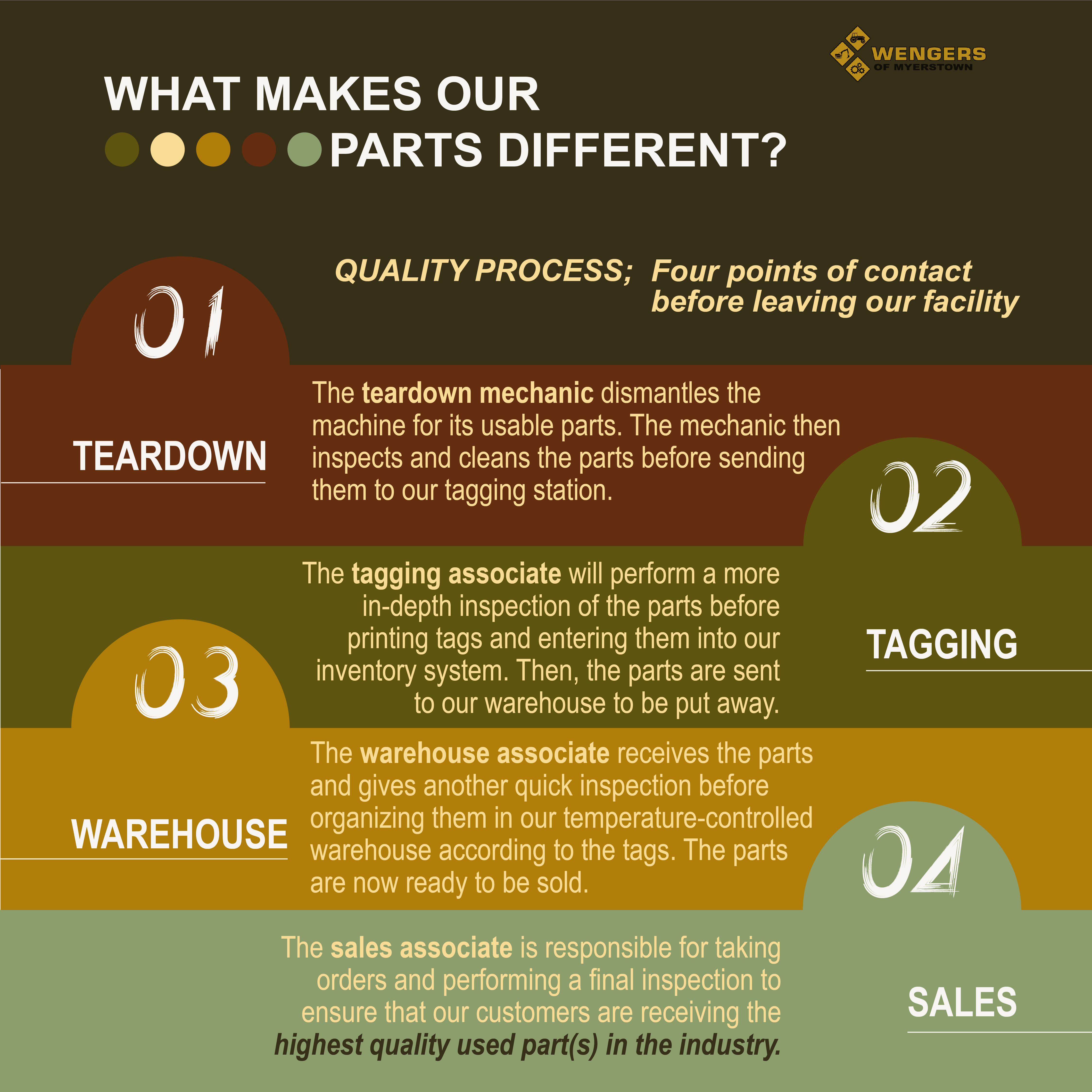What Is A Good Used Part?


Our commitment to quality means every part that leaves our facilities meets strict standards. We offer our customers "Good, used parts" so they can feel confident when replacing a component on their machine.
Let's discuss the quality standards for our Good Used Parts before they are deemed ready for reuse. The components, harvested from retired machines, undergo multiple inspections to ensure they meet our quality standards before being stocked in our temperature-controlled warehouse.
Each part is inspected by several points of contact, with the first being a Teardown Mechanic, before passing onto the Tagging Associate, then the Warehouse Associate, and finally being inspected by the Sales Associate. With each set of hands meticulously looking over and inspecting the part before being sold.
There are also specific inspections for different classifications of parts to guarantee optimal performance. For gears, examination focuses on wear patterns, looking for signs of chipping, grooving, or uneven wear that could compromise performance. Axle assemblies are scrutinized for bearing condition, gear health, and the integrity of crucial components like kingpins and steering linkages. Similarly, cylinders undergo a thorough evaluation, with attention given to the chrome condition of the rod and the overall serviceability of the rod and barrel. Recommendations for cylinder repacking and seal replacement underscore a commitment to reliability. Engines, a cornerstone of machinery functionality, are subject to rigorous testing on a bench, often accompanied by video documentation to assure customers of their performance. While internal components are guaranteed, accessory items like water pumps and alternators are not covered under warranty. Wearable items such as bushings, seals, and O-rings are also excluded from warranty coverage, emphasizing the importance of regular maintenance and replacement cycles.
By offering quality, vetted components, the "good, used parts" market provides both cost-effective solutions and sustainable alternatives, ensuring machines continue to operate efficiently for years to come.
